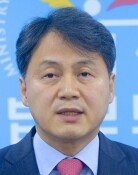SNU research team sequences Koreans' human genome
SNU research team sequences Koreans' human genome
Posted October. 06, 2016 07:24,
Updated October. 06, 2016 08:39
When the “Human Genome Project” was launched more than a decade ago, people awed at the international efforts to analyze and unravel the genetic makeup of human beings. Scientists were completing the sequence of the human genome of a white person in 2000, and “GRCh38,” the latest version of the human reference genome assembly, was mapped in 2013. Unfortunately, the genetic information of Asians, including Koreans, has never been updated during this long journey of genetic research, and thus scientists and researchers were unable to incorporate the genetic information of Asians fully during their research on new medicine or diseases.
The Asian reference genome assembly has finally been sequenced by Korean researchers. The research team led by Prof. Seo Jeong-sun at Seoul National University mapped “AK1,” which can be used as the Asian reference genome assembly, from a Korean individual using the latest genomic technology for gene sequencing. The research team’s study was published in Nature on Thursday.
The Korean research team created AK1 in 2009, which was only the comparison version of genomic information of AK1 individual to the then human reference genome “RCh37.” Due to a lack of technical capabilities for sequencing, the Korean team was only able to compare similarities of gene sequences between AK1 individual and the human reference genome assembly.
Seven years later, the Korean research team does not have to compare its genetic findings with the human reference genome assembly. A new genomic technology “long read sequencing” helped researches assemble the human genome by decoding 15,000 piece of genetic information at once, a huge upgrade from the existing technology that sequences only 150 genes at once. In addition, the new technology decreased the number of sequencing errors. During the mapping of human genome, each gene sequence is added to another to complete the assembly and sequencing errors amplified. If more gene sequences are obtained at once, the number of additions is decreased, reducing the chances of making sequencing errors.
The research team has made great strides in the study of human genome of Asians by sequencing 105 new genetic structures, 55 percent of the 190 structures unknown, and thus improved precision of the genomic assembly of AK1 individual. Combining 72 genetic structures partially sequenced so far, it increases to 93 percent.
In addition, the Korean research team has analyzed unique characteristics of genomic structure of Koreans. The researchers compared gene sequences of AK1 individual to the human reference genome assembly and identified 18,210 differences between two sides. Among them, 7,710 were only found in Koreans, while 3,465 were only showed in the human reference genome assembly. The difference in genomic structure will help researchers analyze genetic characteristics of Koreans and Asians.
The Korean research team launched the “Genome Asia 100K Initiative,” a joint gene sequencing project, in February. As a part of the Genome Asia 100K Initiative, this project has been led by Macrogen, biotechnology enterprise, and the Genomic Medicine Institute at Seoul National University, while 19 Asian countries are participating in the project. The research team plans to continue sequencing of genes of 10,000 Asians until next year and 100,000 Asians over the next three years.
“We will make continuous efforts for Korea to win a technological lead in an international joint project to sequence the human genome assembly of different Asian countries and ethnicities,” Prof. Seo said.
신수빈 동아사이언스기자sbshin@donga.com
Headline News
- Med professors announce intention to leave hospitals starting Thursday
- Bridge honoring Sgt. Moon Jae-sik unveiled in Pennsylvania
- Chief of Staff Chung tells presidential secretaries to stay away from politics
- US FTC bans noncompete agreements
- N. Korea launches cyberattacks on S. Korea's defense companies







